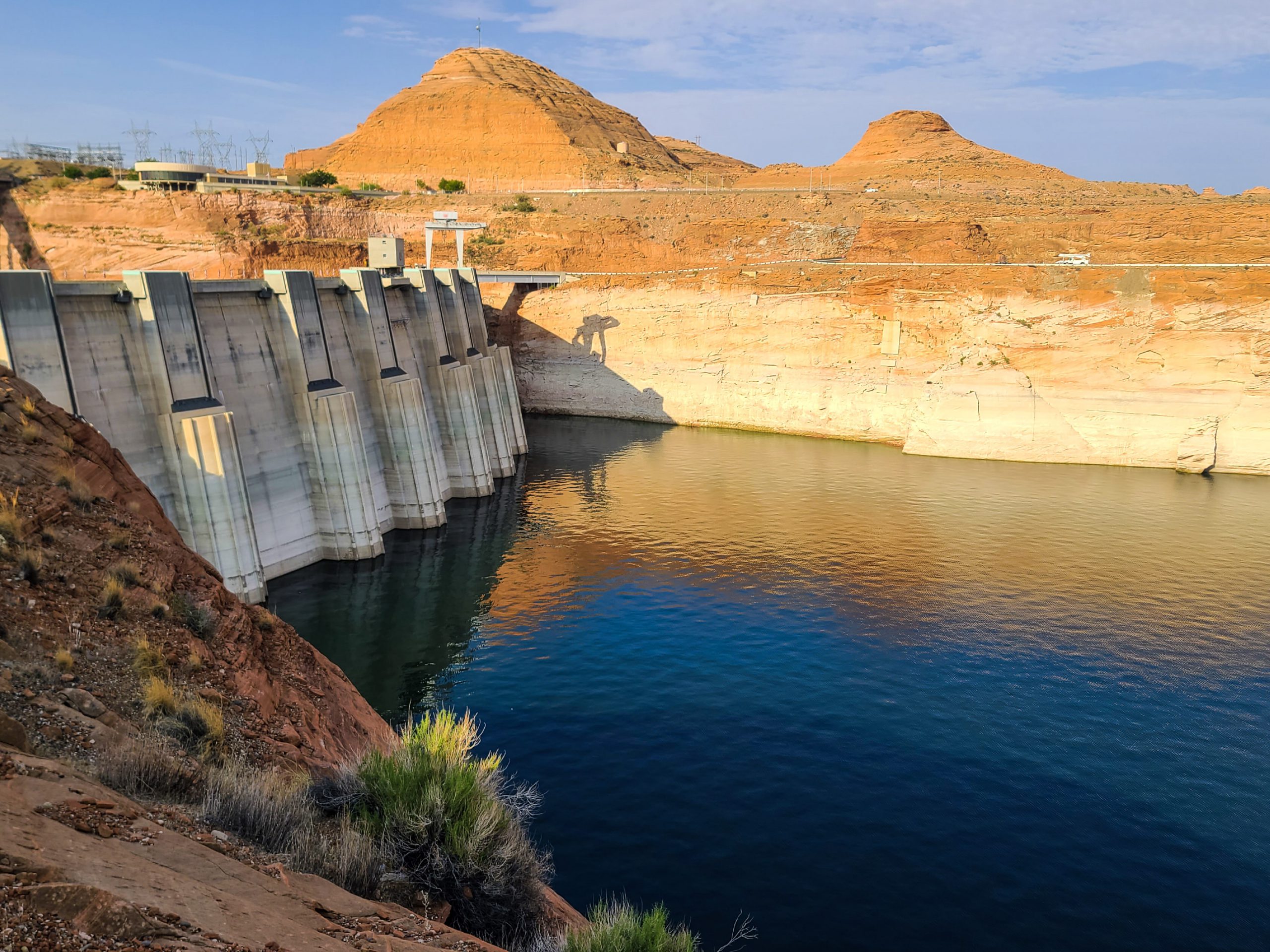Indianz.Com > News > Cronkite News: Water levels in Colorado River falling faster than expected

New estimates show Colorado River levels falling faster than expected
Tuesday, September 28, 2021
Cronkite News
WASHINGTON, D.C. – New projections show that Lake Mead and Lake Powell could reach “critically low reservoir elevations” sooner than expected, spurring experts to say that “bold actions” will be needed to change course.
The Bureau of Reclamation report released Thursday shows an 88% chance that Lake Powell could fall below 3,525 feet by next August, a level that would endanger hydropower production, with chances Lake Mead will hit critical levels in the next few years.
The five-year projection is grimmer than estimates released just two months ago, and shows that a drought contingency plan triggered earlier this year by low reservoir levels, while it was aggressive, may not be enough, one official said.
“We need to take more actions in both Lake Powell and Lake Mead,” said Thomas Buschatzke, director of the Arizona Department of Water Resources. “More actions mean finding a way to get people to conserve their water, or more mandatory reductions to stabilize the lake.”
That was echoed Thursday by Sarah Porter, director of the Kyl Center for Water Policy as Arizona State University’s Morrison Institute.
“We need to take additional bold steps to keep Lake Mead from declining precipitously,” Porter said.

Note: This story originally appeared on Cronkite News. It is published via a Creative Commons license. Cronkite News is produced by the Walter Cronkite School of Journalism and Mass Communication at Arizona State University.
Search
Filed Under
Tags
More Headlines
Chuck Hoskin: Cherokee Nation helps heal our communities
Native America Calling: Native skin cancer study prompts new concerns about risk
South Dakota Searchlight: Trump terminations hit Indian Arts and Crafts Board
Native America Calling: Regional improvement in suicide statistics is hopeful sign
List of Indian Country leases marked for termination by DOGE
‘Let’s get ’em all done’: Senate committee moves quickly on Indian Country legislation
AUDIO: Senate Committee on Indian Affairs Business Meeting to consider several bills
VIDEO: Senate Committee on Indian Affairs Business Meeting to consider several bills
Native America Calling: The ongoing push for MMIP action and awareness
‘Blindsided’: Indian Country takes another hit in government efficiency push
Native America Calling: A new wave of resistance against Trans Native relatives
Urban Indian health leaders attend President Trump’s first address to Congress
‘Mr. Secretary, Why are you silent?’: Interior Department cuts impact Indian Country
Cronkite News: Two Spirit Powwow brings community together for celebration
Native America Calling: Native shows and Native content to watch
More Headlines
Native America Calling: Native skin cancer study prompts new concerns about risk
South Dakota Searchlight: Trump terminations hit Indian Arts and Crafts Board
Native America Calling: Regional improvement in suicide statistics is hopeful sign
List of Indian Country leases marked for termination by DOGE
‘Let’s get ’em all done’: Senate committee moves quickly on Indian Country legislation
AUDIO: Senate Committee on Indian Affairs Business Meeting to consider several bills
VIDEO: Senate Committee on Indian Affairs Business Meeting to consider several bills
Native America Calling: The ongoing push for MMIP action and awareness
‘Blindsided’: Indian Country takes another hit in government efficiency push
Native America Calling: A new wave of resistance against Trans Native relatives
Urban Indian health leaders attend President Trump’s first address to Congress
‘Mr. Secretary, Why are you silent?’: Interior Department cuts impact Indian Country
Cronkite News: Two Spirit Powwow brings community together for celebration
Native America Calling: Native shows and Native content to watch
More Headlines